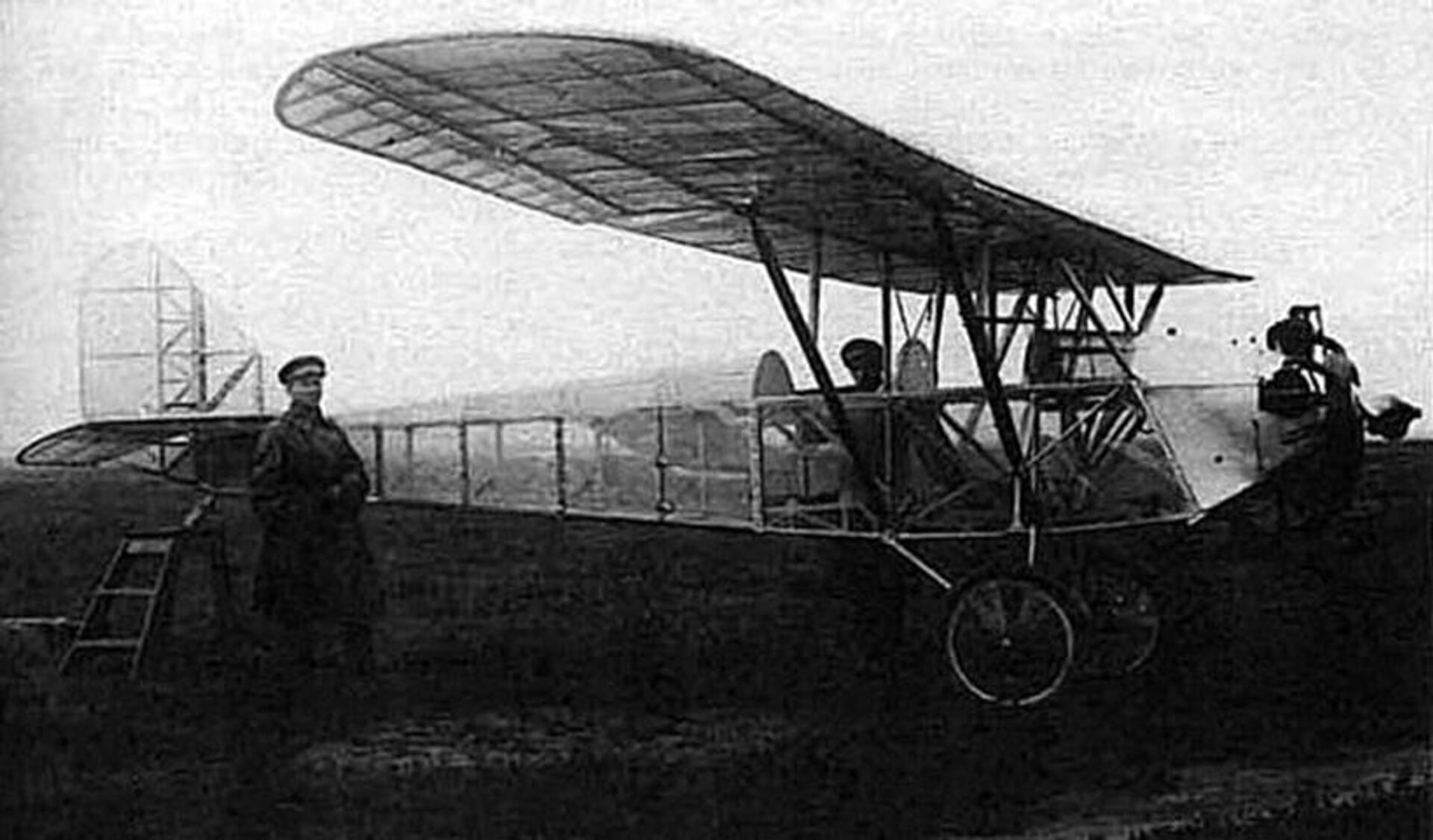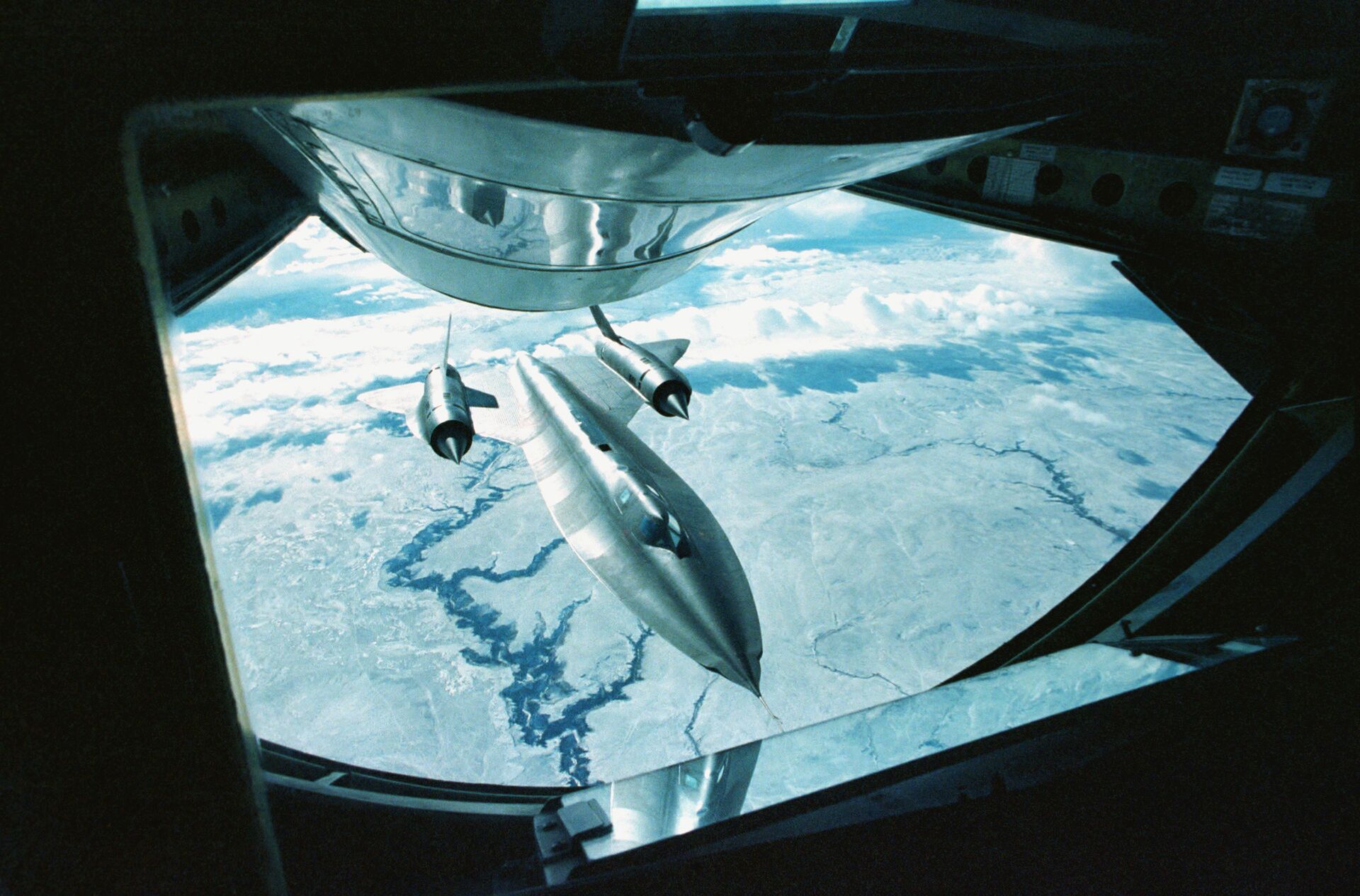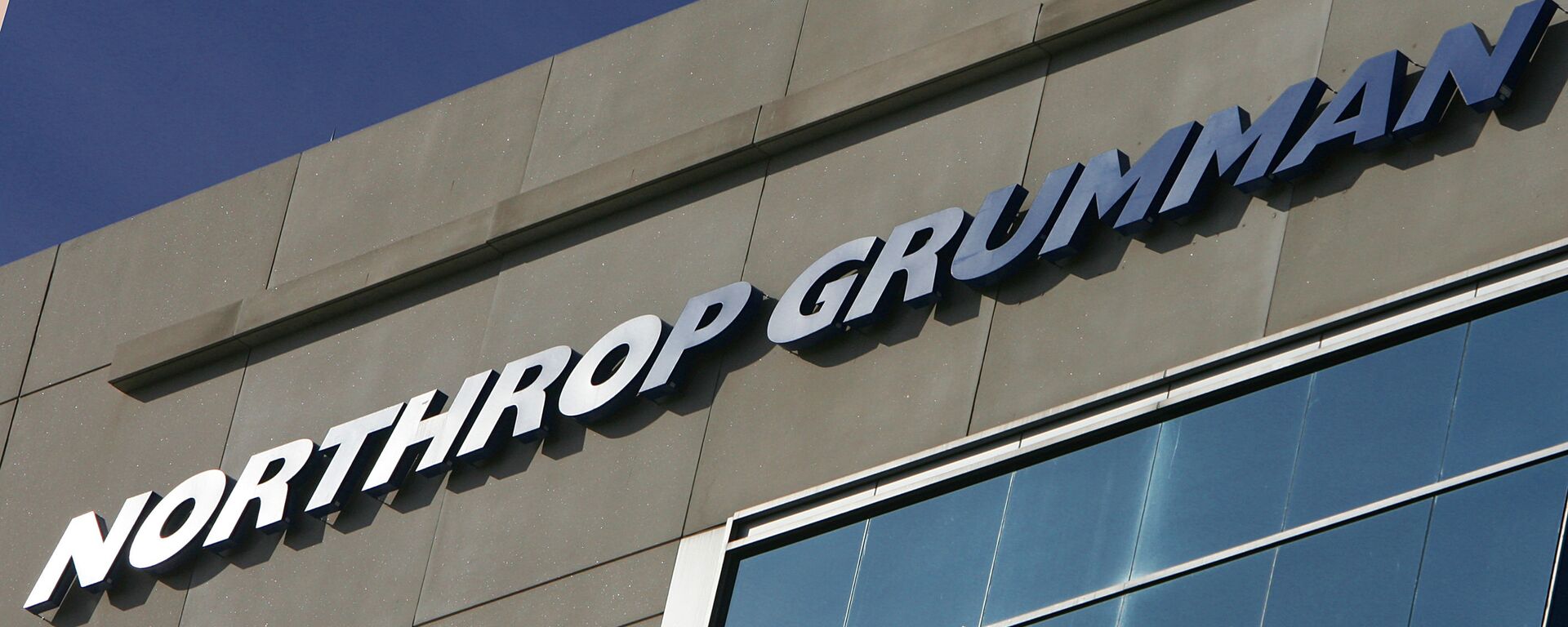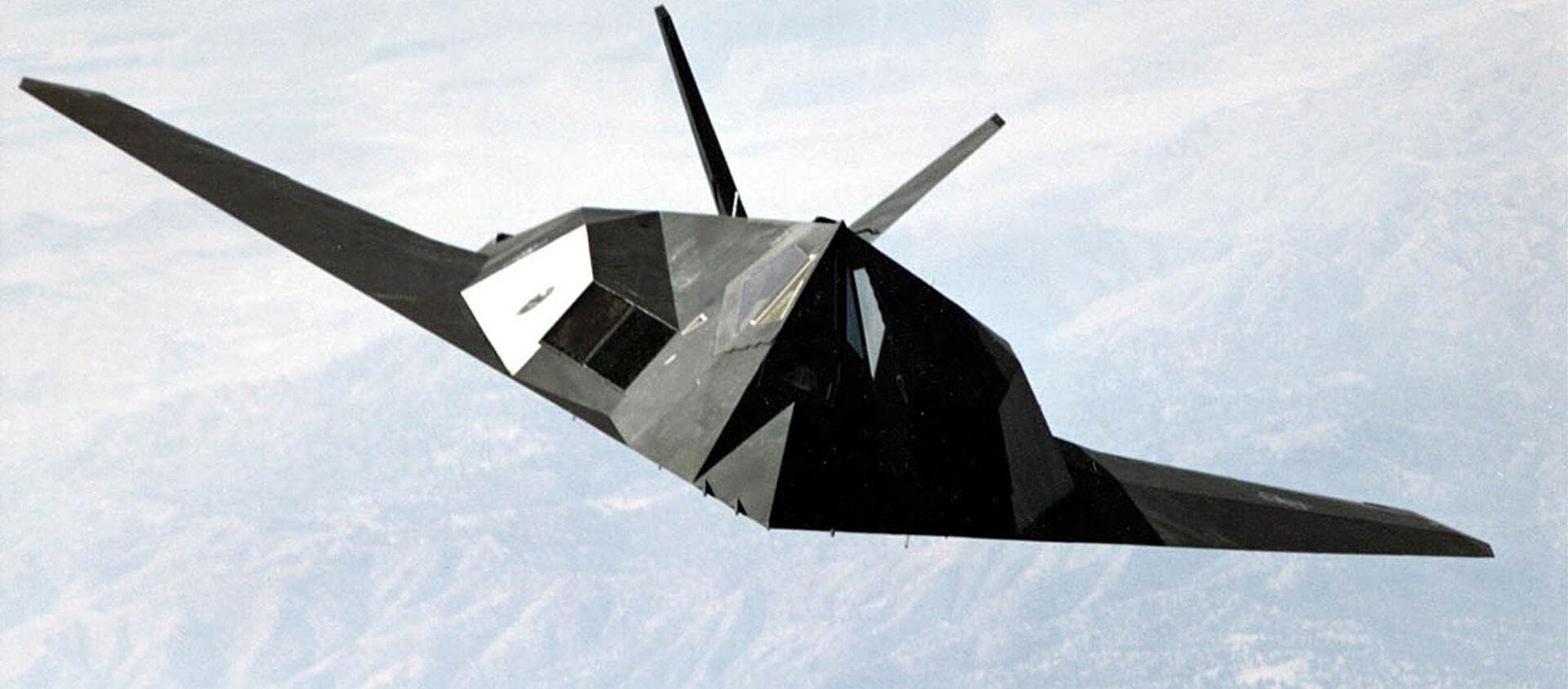https://sputnikglobe.com/20230402/as-russia-creates-new-radar-absorbing-material-who-are-the-world-leaders-in-stealth-tech-1109050396.html
As Russia Creates New Radar-Absorbing Material, Who are the World Leaders in Stealth Tech?
As Russia Creates New Radar-Absorbing Material, Who are the World Leaders in Stealth Tech?
Sputnik International
Experiments in the use of special radar-absorbing materials and aerodynamic designs to provide combat aircraft with stealth characteristics go back to the Second World War. How are such aircraft defined? What are their advantages and drawbacks? And who is leading the charge in the development of next-gen stealth? Sputnik explores.
2023-04-02T12:46+0000
2023-04-02T12:46+0000
2023-04-06T15:21+0000
stealth
us stealth fighters
stealth technologies
stealth aircraft
stealth bomber
stealth technology
stealth fighter
b-2 spirit stealth bomber
special coating
technology
https://cdn1.img.sputnikglobe.com/img/07e4/0b/11/1081194237_0:139:1920:1219_1920x0_80_0_0_6be1059ea6990804490af804670aedde.jpg
Engineers from a subsidiary of Russia’s Ruselectronics have created a new generation of stealth materials which the company says can absorb up to 95 percent of the electromagnetic radiation generated by radars.The “fundamentally new material” is said to be capable of absorbing radio waves across a wide frequency range, and to consist of a fiberglass/metal core mixture that’s thin and lightweight enough to be used aboard aircraft components.The company has been tasked with creating the stealth technology for engine compressor blades – typically one of the components most easily picked up by radar.Ruselectronics promises the new radar-absorbing materials will “significantly complicate the detection of an aerial object using radar equipment,” thus improving the stealth characteristics of aircraft that use them.What is Stealth and Why is It Necessary?Aircraft designers use a variety of design tricks and technologies to reduce the likelihood of aerial vehicles being picked up by enemy radar systems. This includes creating aircraft with aerodynamic properties which reduce drag and visibility (known as "radar signature" or "radar cross-section") to radar signals, and a variety of radar-absorbent coatings ("radiation-absorbent materials," or RAMs). Other stealthy designs focus on reducing the area of the aircraft that can be picked up by radar, including components to shield compressor blades and engines, for example, or the use of a special fuel to reduce thermal radiation.Stealth technologies have become a vital feature of many modern combat aircraft, as well as some drone and cruise missile designs, amid dramatic advances in detection, search and targeting radar technologies, as well as long-range surface-to-air missile designs, in the second half of the 20th century.In their modern iteration during the Cold War, stealth technologies were envisioned by military planners as a futuristic tool to enter enemy airspace, carry out attacks on sensitive, strategic targets, and escape, hopefully without detection or interception by enemy defenses. However, the combat experience of US stealth aircraft in the 1990s showed that even against non-peer adversaries, stealth is not the end-all-be-all miracle weapon it was cracked up to be. More on that below.When Was Stealth First Created?The first "stealthy" aircraft go back to the Second World War, with Nazi Germany’s jet-powered flying wing designs such as the experimental Horten Ho 229 fighter/bomber, being perhaps the most famous example. German designers used experimental charcoal dust coatings on the airframe, and the aircraft’s itself featured a much sleeker radar cross section than its traditional, bulky twin-turboprop-engine cousins of the time.The USSR and Britain also experimented with stealth technology, albeit in less glamorous fashion, before World War II broke out. These designs included the Soviet Polikarov Po-2 multi-role biplane, built almost entirely of fabric and wood, and the Yakovlev AIR-4 "Invisible Aircraft," a prototype of a plane built from cutting-edge synthetic polymers, aluminum powder paint, and lacquer work which allowed the plane to "disappear" from view in testing.Britain’s de Havilland Mosquito light bomber was made mostly of wood, allowing it to evade early radar, and is arguably the most successful wartime "proto-stealth" design alongside the Po-2.Who Developed the First True Modern-Day Stealth Aircraft?The advent of jet power and the increasing sophistication of radar and missile technology made the appearance of stealth fighter and bomber technology as we know it today a matter of time, with the British Avro Vulcan strategic bomber and the Lockheed SR-71 Blackbird strategic reconnaissance aircraft, created in the mid-1950s and mid-1960s, respectively, becoming the first aircraft with modern-day stealth elements produced in large numbers.The SR-71 was used to effect during the Vietnam War, becoming the only American plane never to be shot down by North Vietnam’s air defenses. The aircraft was also used for spying operations against the Soviet Union in the Kola Peninsula and the Baltic Sea, and the Far East. During the 1973 Arab-Israeli War, Blackbirds provided the Israelis with timely intelligence about concentrations of Egyptian, Syrian, and Jordanian forces. The Blackbird was formally retired in the late 1990s, with enthusiasts citing political reasons and high operating costs, but the writing on the wall for the aircraft may have become clear following the fielding of the Mikoyan-Gurevich MiG-25, a Soviet supersonic interceptor whose speed and altitude characteristics made it possible to intercept the SR-71.The US and the USSR continued to experiment with stealth technology in the 1970s and early 1980s, with Rockwell rolling out the B-1 Lancer supersonic variable-sweep wing heavy bomber in the mid-1970s, and Lockheed building the Have Blue proof-of-concept stealth demonstrator in 1977. The Soviets followed up with the MiG-29 fighter, which included stealth features such as a radar-absorbing coatings and a frontal RCS of below one square meter. In the early 1980s, Tupolev created the Tu-160 "White Swan" variable-sweep wing heavy strategic bomber, which continues to hold records as one of the fastest and heaviest bombers ever created. While it was not designed specifically as a "radar-invisible" bomber, the Tu-160 features special radar-absorbent coatings, and, combined with its top speed of March 2.05, is designed to pop in and out of a combat zone and drop its ordinance before the adversary has a chance to respond.In the mid-1980s, Lockheed began production of the F-117 Nighthawk, a contemporary flying wing-design developed as light stealth attack aircraft, and featuring an RCS of just 0.001 square meters. During the late 1980s, Northrop created its own flying wing stealth plane – the B-2 Spirit bomber –designed for bombing missions deep inside enemy territory. These two planes are touted as the first true "stealth" aircraft – where the technology is an integral, foundational part of the design, rather than a complementary add-on.Modern stealth aircraft, and planes which incorporate stealth technologies, include the F-22 Raptor fighter, the Sukhoi Su-34 fighter-bomber, the MiG-35 and Su-35 fighters, the Eurofighter Typhoon, the HAL Tejas fighter, the Shenyang J-31 fighter, Sukhoi Su-57 fighter, and the F-35 Lightning II multirole aircraft.What are the Vulnerabilities of Stealth Aircraft?While they do have improved capability to operate in hostile aerial environments without detection compared to their non-stealth cousins, stealth aircraft are not invisible, and can be vulnerable to even legacy radar and missile systems –particularly when operating in a dense air defense environment, and if air defense troops display a high level of skill. In 1999, Yugoslav air defenses shot down a stealthy F-117 Nighthawk and hit another, with the first plane downed using the S-125 Neva, a Soviet air defense system first fielded in the early 1960s.Modern effective countermeasures to stealth aircraft include passive (multistatic) radar with improved RCS detection, infrared search and track systems, VHF radar, and over-the-horizon radar. Along with the US and some of its NATO allies, Russia, China, and Iran all boast the possession of modern radar and missile systems capable of detecting, tracking and if necessary downing enemy stealth aircraft. These include the Podsolnukh ("Sunflower"), a coastal over-the-horizon surface-wave radar system which can detect even the latest US stealth equipment – the F-35, at long-range.
https://sputnikglobe.com/20230308/us-air-force-rolls-out-new-images-of-its-next-generation-stealth-bomber-1108166735.html
https://sputnikglobe.com/20190316/northrop-ho-229-testing-mystery-1073301767.html
https://sputnikglobe.com/20220201/photos-us-navys-f-35-stealth-fighters-seem-to-be-rusting-on-south-china-sea-voyage-1092648254.html
https://sputnikglobe.com/20190324/yugoslavia-nato-bombing-f117-1073363844.html
Sputnik International
feedback@sputniknews.com
+74956456601
MIA „Rossiya Segodnya“
2023
News
en_EN
Sputnik International
feedback@sputniknews.com
+74956456601
MIA „Rossiya Segodnya“
Sputnik International
feedback@sputniknews.com
+74956456601
MIA „Rossiya Segodnya“
stealth, coating, design, material, russia, united states, china, iran, radar, anti-radar, what is stealth, when was stealth created, who created first modern stealth plane, what are vulnerabilities of stealth
stealth, coating, design, material, russia, united states, china, iran, radar, anti-radar, what is stealth, when was stealth created, who created first modern stealth plane, what are vulnerabilities of stealth
As Russia Creates New Radar-Absorbing Material, Who are the World Leaders in Stealth Tech?
12:46 GMT 02.04.2023 (Updated: 15:21 GMT 06.04.2023) Experiments in the use of special radar-absorbing materials and aerodynamic designs to provide combat aircraft with stealth characteristics go back to the Second World War. How are such aircraft defined? What are their advantages and drawbacks? And who is leading the charge in the development of next-gen stealth? Sputnik explores.
Engineers from a subsidiary of Russia’s Ruselectronics have created a new generation of stealth materials which the company says can absorb up to 95 percent of the electromagnetic radiation generated by radars.
The “fundamentally new material” is said to be capable of absorbing radio waves across a wide frequency range, and to consist of a fiberglass/metal core mixture that’s thin and lightweight enough to be used aboard aircraft components.
“The issue of creating a structural radar-absorbing material has long been a problem in the modern military aircraft industry. Existing aircraft stealth coatings need to be regularly restored, while fiberglass provides a reduced reflection coefficient which does not require maintenance. Our prototypes have already successfully passed required factory tests,” Central Design Bureau of Special Radiomaterials director Alexey Dymovskikh said in a press statement.
The company has been tasked with creating the stealth technology for engine compressor blades – typically one of the components most easily picked up by radar.
Ruselectronics promises the new radar-absorbing materials will “significantly complicate the detection of an aerial object using radar equipment,” thus improving the stealth characteristics of aircraft that use them.
What is Stealth and Why is It Necessary?
Aircraft designers use a variety of design tricks and technologies to reduce the likelihood of aerial vehicles being picked up by enemy radar systems. This includes creating aircraft with aerodynamic properties which reduce drag and visibility (known as "radar signature" or "radar cross-section") to radar signals, and a variety of radar-absorbent coatings ("radiation-absorbent materials," or RAMs). Other stealthy designs focus on reducing the area of the aircraft that can be picked up by radar, including components to shield compressor blades and engines, for example, or the use of a special fuel to reduce thermal radiation.
Stealth technologies have become a vital feature of many modern combat aircraft, as well as some drone and cruise missile designs, amid dramatic advances in detection, search and targeting radar technologies, as well as long-range surface-to-air missile designs, in the second half of the 20th century.
In their modern iteration during the Cold War, stealth technologies were envisioned by military planners as a futuristic tool to enter enemy airspace, carry out attacks on sensitive, strategic targets, and escape, hopefully without detection or interception by enemy defenses. However, the combat experience of US stealth aircraft in the 1990s showed that even against non-peer adversaries, stealth is not the end-all-be-all miracle weapon it was cracked up to be. More on that below.
When Was Stealth First Created?
The first "stealthy" aircraft go back to the Second World War, with Nazi Germany’s jet-powered flying wing designs such as the experimental
Horten Ho 229 fighter/bomber, being perhaps the most famous example. German designers used experimental charcoal dust coatings on the airframe, and the aircraft’s itself featured a much sleeker radar cross section than its traditional, bulky twin-turboprop-engine cousins of the time.
The USSR and Britain also experimented with stealth technology, albeit in less glamorous fashion, before World War II broke out. These designs included the Soviet Polikarov Po-2 multi-role biplane, built almost entirely of fabric and wood, and the
Yakovlev AIR-4 "Invisible Aircraft," a prototype of a plane built from cutting-edge synthetic polymers, aluminum powder paint, and lacquer work which allowed the plane to "disappear" from view in testing.
Britain’s de Havilland Mosquito light bomber was made mostly of wood, allowing it to evade early radar, and is arguably the most successful wartime "proto-stealth" design alongside the Po-2.
Who Developed the First True Modern-Day Stealth Aircraft?
The advent of jet power and the increasing sophistication of radar and missile technology made the appearance of stealth fighter and bomber technology as we know it today a matter of time, with the British Avro Vulcan strategic bomber and the Lockheed SR-71 Blackbird strategic reconnaissance aircraft, created in the mid-1950s and mid-1960s, respectively, becoming the first aircraft with modern-day stealth elements produced in large numbers.
The SR-71 was used to effect during the Vietnam War, becoming the only American plane never to be shot down by North Vietnam’s air defenses. The aircraft was also used for spying operations against the Soviet Union in the Kola Peninsula and the Baltic Sea, and the Far East. During the 1973 Arab-Israeli War, Blackbirds provided the Israelis with timely intelligence about concentrations of Egyptian, Syrian, and Jordanian forces. The Blackbird was formally retired in the late 1990s, with enthusiasts citing political reasons and high operating costs, but the writing on the wall for the aircraft may have become clear following the fielding of the Mikoyan-Gurevich MiG-25, a Soviet supersonic interceptor whose speed and altitude characteristics made it possible to intercept the SR-71.
The US and the USSR continued to experiment with stealth technology in the 1970s and early 1980s, with Rockwell rolling out the B-1 Lancer supersonic variable-sweep wing heavy bomber in the mid-1970s, and Lockheed building the Have Blue proof-of-concept stealth demonstrator in 1977. The Soviets followed up with the MiG-29 fighter, which included stealth features such as a radar-absorbing coatings and a frontal RCS of below one square meter. In the early 1980s, Tupolev created the Tu-160 "White Swan" variable-sweep wing heavy strategic bomber, which continues to hold records as one of the fastest and heaviest bombers ever created. While it was not designed specifically as a "radar-invisible" bomber, the Tu-160 features special radar-absorbent coatings, and, combined with its top speed of March 2.05, is designed to pop in and out of a combat zone and drop its ordinance before the adversary has a chance to respond.
In the mid-1980s, Lockheed began production of the F-117 Nighthawk, a contemporary flying wing-design developed as light stealth attack aircraft, and featuring an RCS of just 0.001 square meters. During the late 1980s, Northrop created its own flying wing stealth plane – the B-2 Spirit bomber –designed for bombing missions deep inside enemy territory. These two planes are touted as the first true "stealth" aircraft – where the technology is an integral, foundational part of the design, rather than a complementary add-on.
Modern stealth aircraft, and planes which incorporate stealth technologies, include the F-22 Raptor fighter, the Sukhoi Su-34 fighter-bomber, the MiG-35 and Su-35 fighters, the Eurofighter Typhoon, the HAL Tejas fighter, the Shenyang J-31 fighter, Sukhoi Su-57 fighter, and the F-35 Lightning II multirole aircraft.
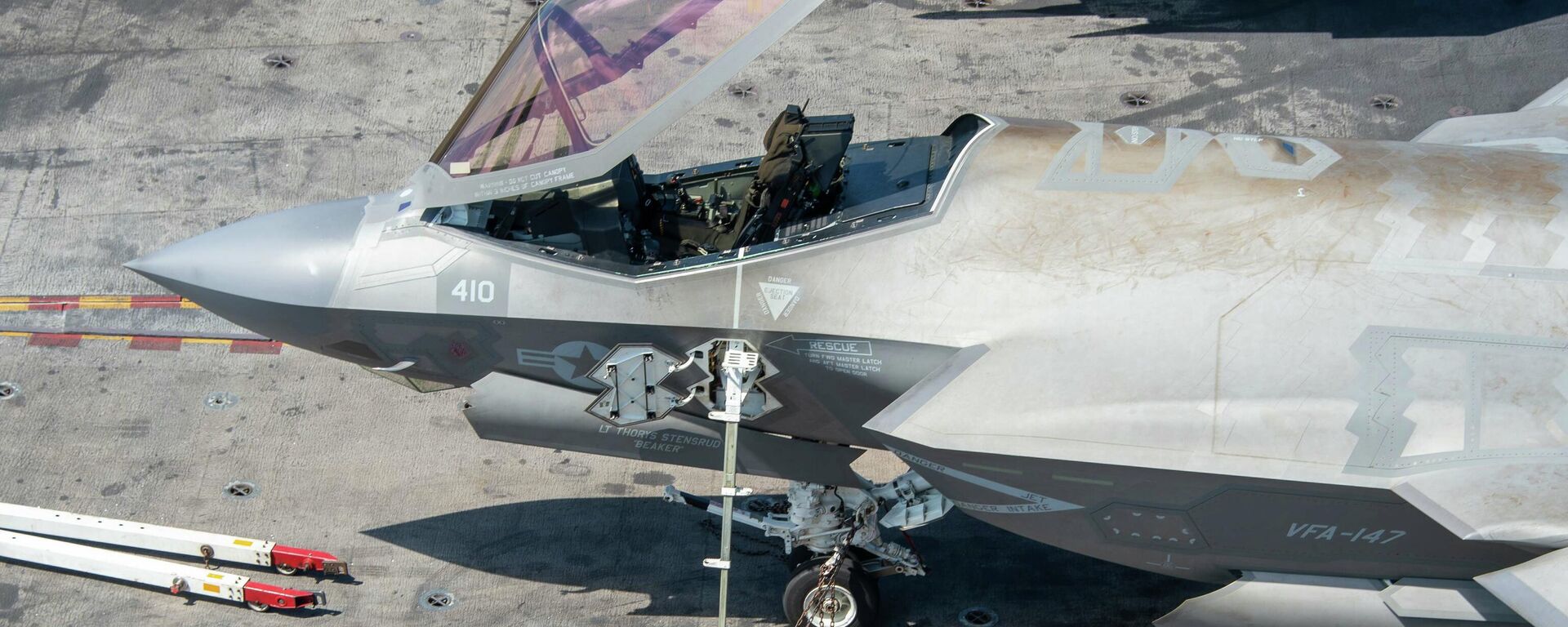
1 February 2022, 00:26 GMT
What are the Vulnerabilities of Stealth Aircraft?
While they do have improved capability to operate in hostile aerial environments without detection compared to their non-stealth cousins, stealth aircraft are not invisible, and can be vulnerable to even legacy radar and missile systems –particularly when operating in a dense air defense environment, and if air defense troops display a high level of skill. In 1999, Yugoslav air defenses
shot down a stealthy F-117 Nighthawk and
hit another, with the first plane downed using the S-125 Neva, a Soviet air defense system first fielded in the early 1960s.
Modern effective countermeasures to stealth aircraft include passive (multistatic) radar with improved RCS detection, infrared search and track systems, VHF radar, and over-the-horizon radar. Along with the US and some of its NATO allies,
Russia,
China, and
Iran all boast the possession of modern radar and missile systems capable of detecting, tracking and if necessary downing enemy stealth aircraft. These
include the Podsolnukh ("Sunflower"), a coastal over-the-horizon surface-wave radar system which can detect even the latest US stealth equipment – the F-35, at long-range.

